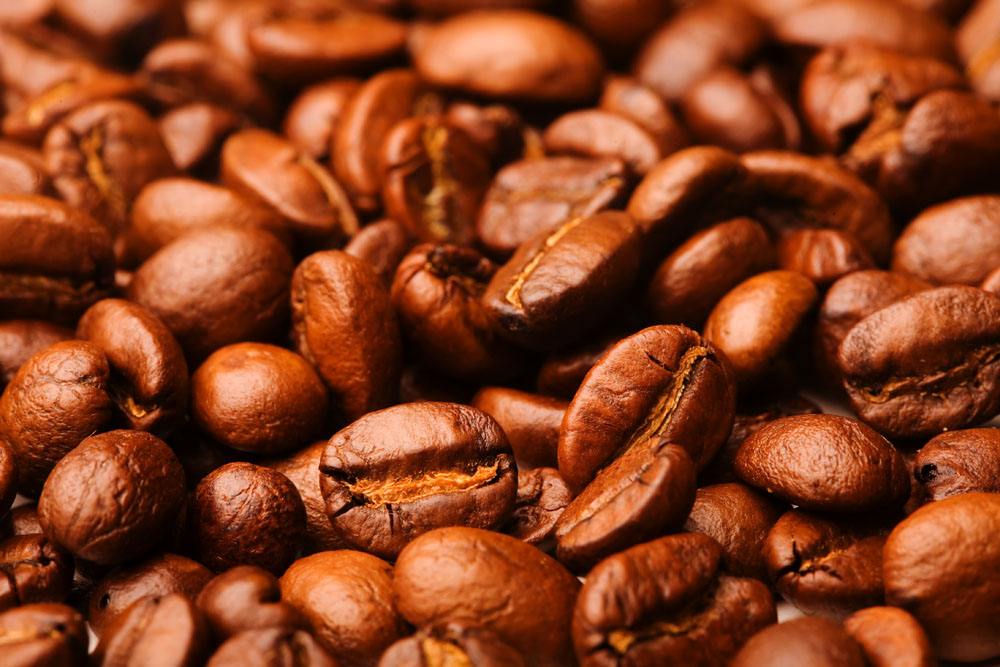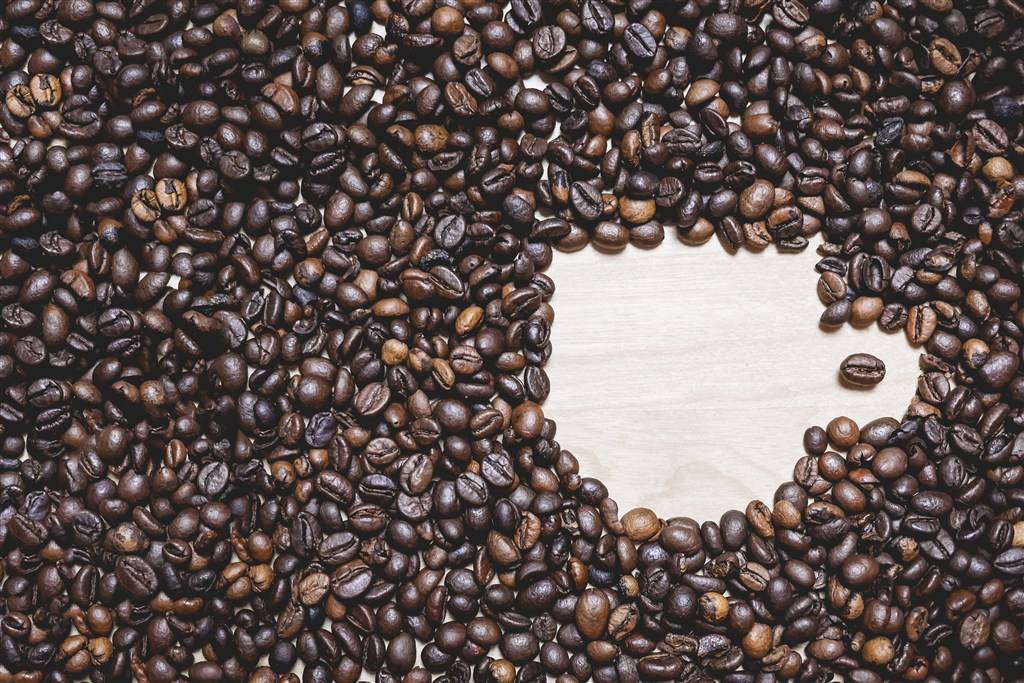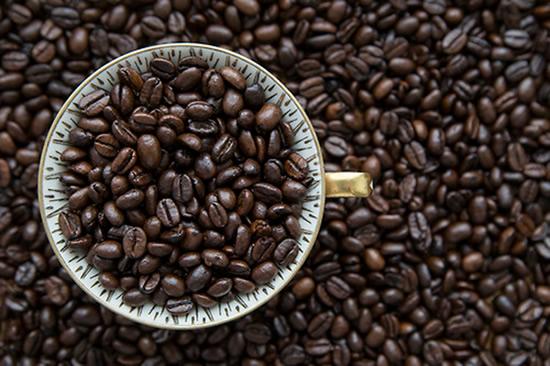The difference between Arabica coffee beans and Robusta coffee beans
Follow the caf é (Wechat official account vdailycom) and found that Beautiful Cafe opened a small shop of its own.
In fact, Arabica is the name of the coffee tree variety (species).
"Coffea Arabica" and "Coffea Robusta" are two different coffee varieties, which currently account for the vast majority of coffee bean production in the world. There are three main differences between Arabica coffee and Robusta coffee: 1. Differences in planting conditions. two。 The flavor and characteristics are different. 3. The difference between market price and use.

Planting condition difference
The planting conditions of "Arabica" coffee are relatively stringent, requiring higher elevations (6 to 2000 meters above sea level), fertile soil fertility, adequate moisture, proper sunshine conditions and shade. "Arabica" coffee species are less resistant to diseases and insect pests and are vulnerable to damage. In addition, the annual output of coffee trees per unit area is also lower.
Currently, "Arabica" coffee accounts for 75% of the world's coffee production, and of these "Arabica" coffee production, only 10% of Arabica coffee quality can be classified as "boutique coffee (Specialty Coffee)."
"Robusta" coffee, commonly known as "sturdy beans", can be grown at low elevations (200 to 800 meters above sea level), has strong resistance to diseases and insect pests, is not vulnerable to agricultural disasters, has a high annual output per unit area, and is harvested in large quantities by machine. in general, the cost of production is much lower than that of Arabica coffee.
Different flavors and characteristics
Arabica coffee has a varied and broad potential flavor. Arabica coffee produced in different regions, different elevations and different climates usually has its own characteristics and can show a completely different flavor. "Arabica" coffee smells like grass when it is not roasted. After proper roasting, it shows "fruity" (medium-light roasting) and "caramel sweetness" (deep roasting). Generally speaking, it has a better aroma and flavor than Robusta beans.
"Robusta" coffee usually has an ordinary, rigid and pungent flavor, and because the vast majority of robusta around the world are grown in low-altitude areas (author's note: as of May 2008, only India has rare high-altitude, high-quality, washed Robusta coffee beans). The flavor produced by different regions and different climates is not very different, relatively lack of personality. When unbaked, it smells like raw peanuts, and the taste of cheap robusta coffee beans is usually between "wheat tea" (light baking) and "rubber tire flavor" (deep roasting). It is difficult to show fine flavor.
Difference between market price and use
High-quality Arabica coffee requires a cumbersome process of hand picking, selection and fine processing, so the world's most expensive and best coffee beans are Arabica coffee. "Robusta" coffee is usually used to produce instant coffee and canned coffee because of its low cost. A small number of better quality "Robusta" coffee are also used in mixed coffee (with Arabica coffee) espresso beans.
Other differences
There is another important difference: the amount of "Caffeine" (C8H10N4O2). Robusta coffee contains about twice as much caffeine as Arabica coffee, which is why drinking some canned coffee is prone to palpitations and insomnia.
After seeing so many differences between Arabica Coffee and Robusta Coffee, we must finally emphasize:
"Arabica coffee" is not the same as "good coffee", "Robusta" is not absolutely cheap coffee!
Arabica coffee accounts for 75% of the world's coffee production, and its quality varies widely, from good to bad. In recent years, a few countries (such as India) have devoted themselves to improving the quality of robusta coffee. They have planted robusta in high altitude areas, given the most careful care, and carefully washed the coffee. As a result, they get very good quality robusta coffee beans! Top Robusta beans are not cheap either, getting rid of the old impression that Robusta are cheap beans! Therefore, the quality of coffee beans can no longer be judged by the crude and outdated ancient criterion of "Arabica beans".
[related reading]
Primary species
Arabica coffee accounts for 70% and 80% of all coffee production, and its excellent flavor and aroma make it the only native species of coffee.
A coffee that can be drunk directly. However, its resistance to dryness, frost, diseases and insect pests is too low, especially the natural enemy of coffee-leaf rust, so all producing countries are committed to variety improvement.
It turned out that all the commercial coffee in the world was small-grain coffee, but it was only at the end of the 19th century that growers began to look for other disease-resistant varieties because of the collapse of a large number of coffee farms caused by leaf rust.
Small-grain coffee is still the most important coffee variety, accounting for about 3% of the world's total coffee production. It is mainly grown in Latin American countries, but also partly in Indonesia and the Pacific islands. The geographical and climatic conditions of Brazil, the largest coffee producer in the world, are very suitable for the growth of small-grain coffee, and the main coffee varieties planted are also small-grain coffee. Brazil's coffee production accounts for more than 1% of the world's total output.
The fruit of small-grain coffee is smaller than that of medium-grain coffee and large-grain coffee. The berries are oval and generally contain two seeds, the so-called "coffee beans".
Subspecies
The three early subspecies in the Arabica species (Coffea arabica) series are: blue mountain subspecies (varietal BlueMountain), Tibica subspecies (varietal Typica) and bourbon species (varietal Bourbon).
Jamaican Blue Mountain is an excellent coffee; Tibica, native to Ethiopia and southeastern Sudan, is the most widely cultivated variety of coffee in the Western Hemisphere; and Hawaii's Kona, which has a high yield in Hawaii, is comparable in quality to Blue Mountain coffee, with a price difference of only $1 to $3.
The bourbon species was introduced to America by French immigrants in the 18th century from the island of Island of Bourbon (today's French island of Reunion Island of Reunion, located in the Indian Ocean east of Madagascar). It is now widely cultivated in the Western Hemisphere, such as Brazil, and a small amount in Yunnan, China. The caffeine content of Bobang subspecies is 20% to 30% higher than that of Tibica subspecies, but less than most coffee subspecies. At first, the main branch and the trunk grew upward at 45 degrees, and drooped with the fruit load. The lateral branches are denser, the fruit is more, and the yield is higher, but the berries are smaller and mature faster, so they are not resistant to strong wind and heavy rain. Bourbon coffee is a variety of small-grain coffee second only to Tibica, with more fruit, higher yield, but smaller berries and slower ripening. The small-grain coffee grown in Yunnan, China is mainly Tibika and Bobang subspecies. From the botanical point of view of coffee, Yunnan small-grain coffee is genetically close to the best blue mountains of Jamaica (Jamaica Blue Mountain) and Kona of Hawaii.
Important Notice :
前街咖啡 FrontStreet Coffee has moved to new addredd:
FrontStreet Coffee Address: 315,Donghua East Road,GuangZhou
Tel:020 38364473
- Prev

Characteristics of Arabica coffee, description of Arabica coffee flavor
Following Cafe Review (Wechat official account vdailycom) found that Arabica beans, which opened a small shop in Beautiful Cafe, was an important kind of commercial coffee, resulting in a period of less than three years, with a high-quality aroma and sour taste. Arabica coffee beans are mainly produced in South America (except parts of Argentina and Brazil), Central America, Africa (Kenya, Ethiopia and other places), mainly in the east.
- Next

Coffee producing areas in Angola, coffee characteristics in Angola
Follow the caf é (official Wechat account vdailycom) and found that the Cafe Beautiful has opened a small shop of its own in Angola where coffee is produced: 98% of the coffee in Angola (Angola) is Roberts. The best brands in Angola used to be Ambriz, Amborm and NovoRedondo, all of which are known for their consistent quality. Ann
Related
- Detailed explanation of Jadeite planting Land in Panamanian Jadeite Manor introduction to the grading system of Jadeite competitive bidding, Red bid, Green bid and Rose Summer
- Story of Coffee planting in Brenka region of Costa Rica Stonehenge Manor anaerobic heavy honey treatment of flavor mouth
- What's on the barrel of Blue Mountain Coffee beans?
- Can American coffee also pull flowers? How to use hot American style to pull out a good-looking pattern?
- Can you make a cold extract with coffee beans? What is the right proportion for cold-extracted coffee formula?
- Indonesian PWN Gold Mandrine Coffee Origin Features Flavor How to Chong? Mandolin coffee is American.
- A brief introduction to the flavor characteristics of Brazilian yellow bourbon coffee beans
- What is the effect of different water quality on the flavor of cold-extracted coffee? What kind of water is best for brewing coffee?
- Why do you think of Rose Summer whenever you mention Panamanian coffee?
- Introduction to the characteristics of authentic blue mountain coffee bean producing areas? What is the CIB Coffee Authority in Jamaica?

